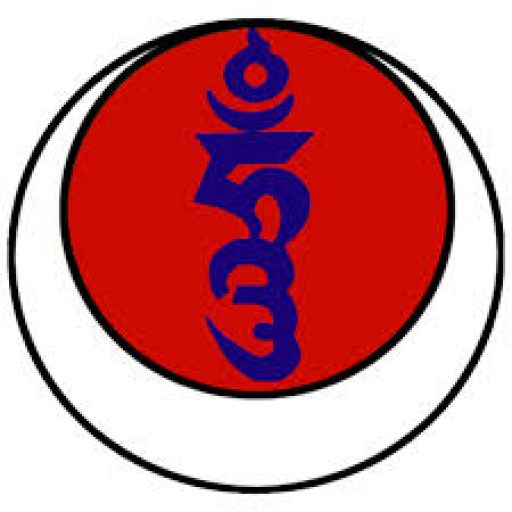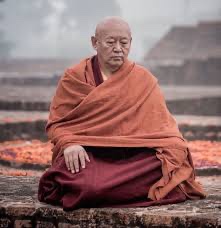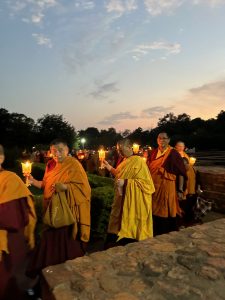His Holiness's Vision
The Shravasti Meditation curriculum was designed by H.H. Drikung Kyabgön Chetsang Rinpoche as a nonsectarian introduction to meditation for 21st-century practitioners and for a life-long practice. It begins with Calm Abiding Meditation and Insight Meditation using the Sutra on Mindfulness of Breathing as a structure. This sutra is Buddha’s actual meditation instructions to his students. This modern meditation system, that His Holiness developed, incorporates the views of Theravada, Mahayana, and Vajrayana in a clear and accessible format which he named Shravasti, after the sacred site where Buddha transmitted most of the Sutras. During COVID His Holiness had the opportunity to reflect deeply upon the training adding more detail, sutra references and personal instruction in meditation and its stages of understanding. The result is a more comprehensive evolution of meditation instructions. This profound practice segues naturally into advanced understanding regarding teh nondual nature of reality found in Mahamudra, Dzogchen and the completion stages of Vajrayana.
Khenmo Drolma was trained personally by His Holiness Chetsang Rinpoche to teach this curriculum. In 2018, she traveled to Taiwan and in 2019, to Maylasia to join a select group invited to train as teachers with H.H. Drikung Kyabgön. The final teacher training was given In 2023, in which His Holiness presented the newly expanded curriculum in Shravasti, India.
Why His Holiness Drikung Kyabgön Chetsang created this curriculum:
“Among the three tools the Buddha taught for cultivating wisdom (i.e., listening, contemplation, and meditation), meditation is often neglected. Many people dedicate their entire life to studying Buddhism, but fail to practice what the Buddha taught. There are many meditation approaches. For example, we Tibetans have the common and uncommon preliminaries. During the traditional three-year retreat, various approaches to meditation are also taught. However, most people mainly focus on completing the required number of accumulations while neglecting the essence of these practices: keeping our mind undisturbed!
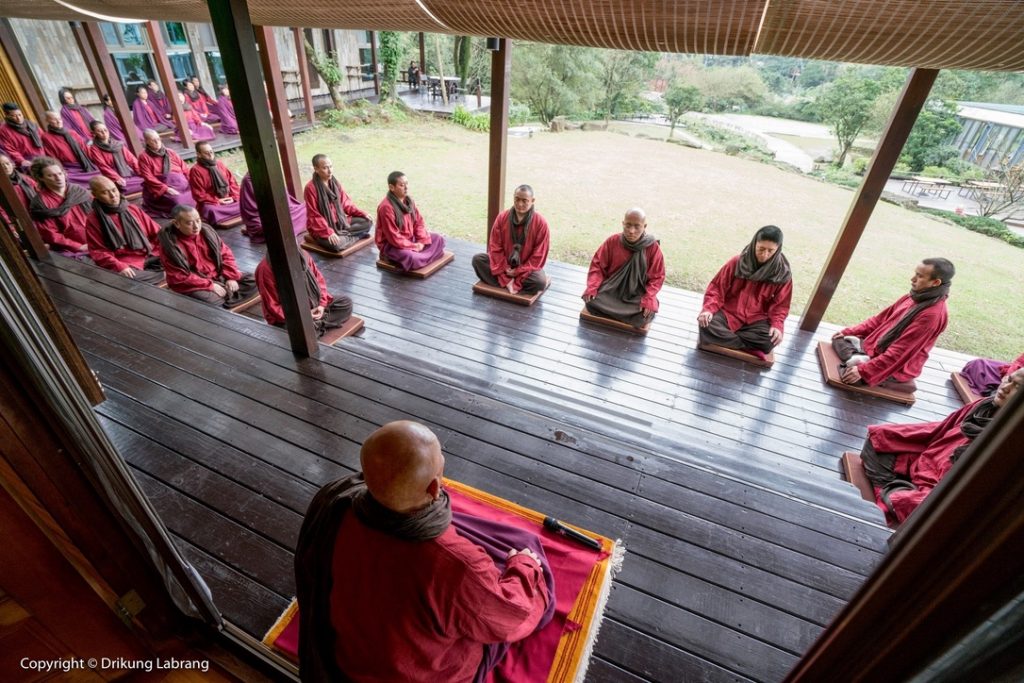
“Many practitioners have attended advanced teachings on Dzogchen or Mahamudra without being able able to meditate with a single-pointed mind for 10 or even 5 minutes. Meditation is not easy. You should start with calm-abiding to stabilize your mind and, if possible, attend a Shravasti Meditation retreat, not only to receive teachings, but to whole-heartedly engage in meditation practice and increase your ability to stabilize your mind. The Shravasti Meditation is an integrated meditation approach that relies directly on the Buddha’s words as the source of instruction. It is based on the Anapanasati Sutta (Discourse on Mindfulness of Breathing).” HHDKCR
What is the Curriculum/Training?
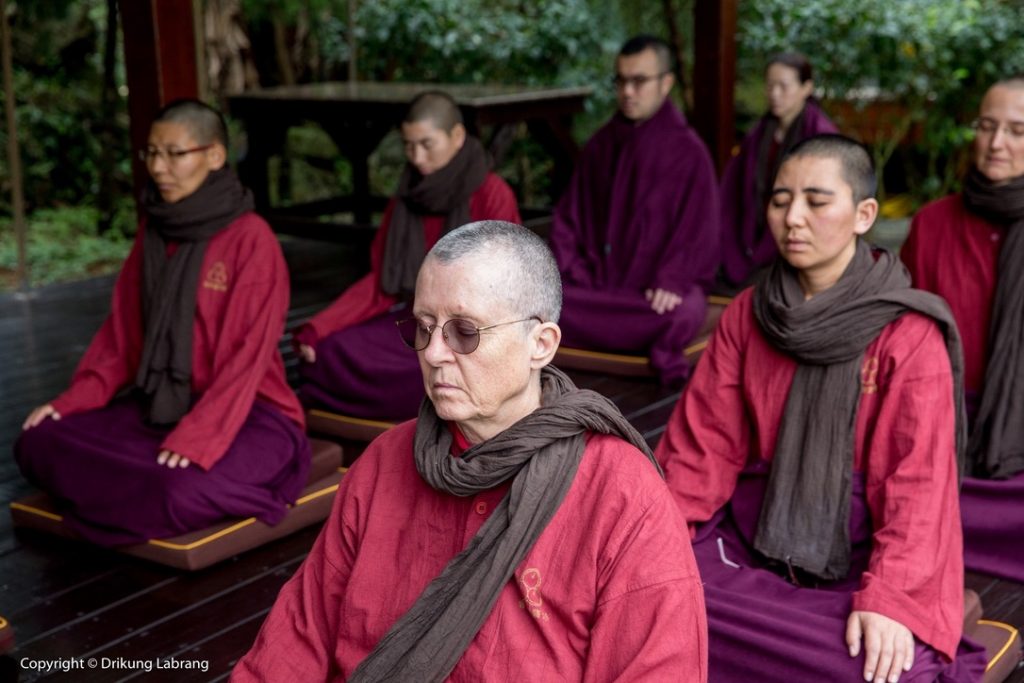
The Shravasti curiculum is a nondenominational, nonsectarian Buddhist meditation system suitable for non Buddhists as well. Ideally it is a ten day residential immersion into progressive stages of meditation. In such a setting, students immerse themselves in a strict schedule, experiencing the meditation from 5:00 AM to 9 PM. This is a traditional retreat schedule such as you would find in 3 year retreats. Students keep the monastic practice of not taking an evening meal, as it leads to better concentration. Each morning begins with reading the Sutra on Awareness of Breathing, a combination of yogic exercises and meditation. There are five meditation sessions each day structured around the Sutra’s 16 contemplations on breath practice, along with 45 minutes of walking meditation in the early afternoon. One or more Dharma talks per day provide insight into the subtlety of Buddha’s instructions. The focus on the meditation practice for 10 days provides a thorough foundation for continued practice. The Shravasti system is intended to be a complete practice path.
Support Vajra Dakini Nunnery
Vajra Dakini operates soley by donation. Your generosity sustains the lives and works of the nuns of Vajra Dakini Nunnery and our annual donation to Drikung Kagyu Samtenling Nunnery.
